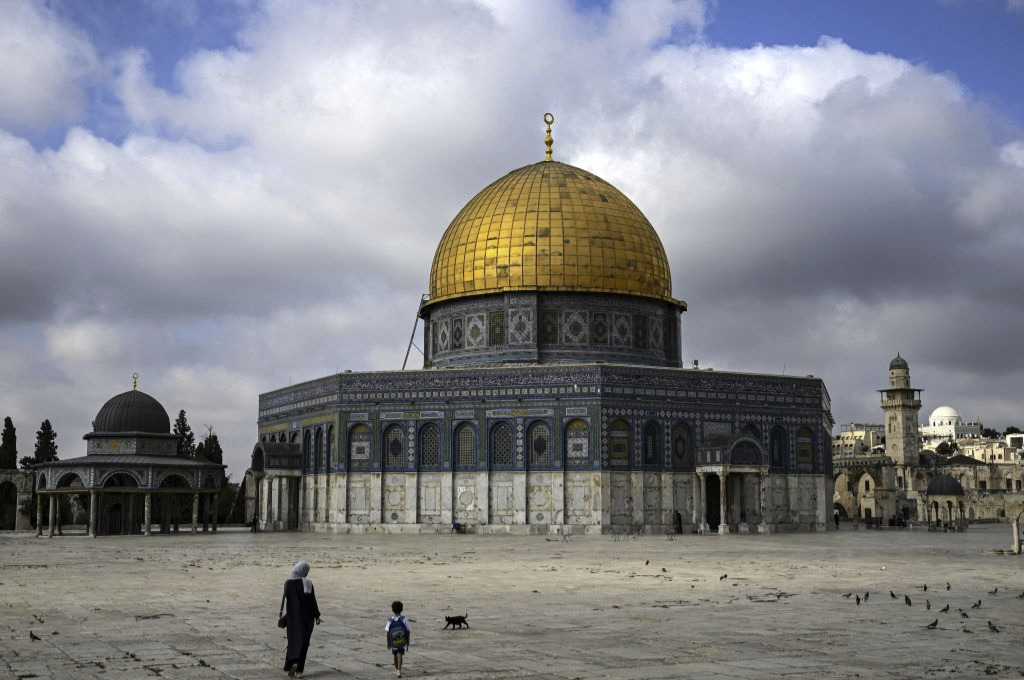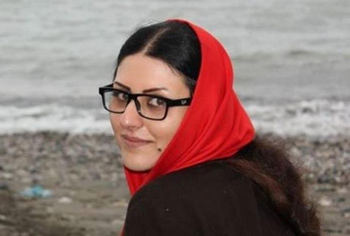
Ed Husain, self-styled ex-Hizb ut Tahrir and ex-Hamas "former radical," now "anti-Hamas/Muslim Brotherhood" campaigner, spoke on July 9, 2024 on a panel entitled, "Islam, Israel, and the West," at the fourth National Conservatism Conference.
Husain is an "ex-jihadist Muslim," turned apologist for Islam. Despite his recent assertion to the contrary, the jihad conquest of Palestine was not a "liberation," and most assuredly did not "reinstate Judaism and Jewishness to Jerusalem."
Oddly, Husain provided a counterfactual, hagiographic formulation of the early Islamic jihad conquests, in particular, of historical Palestine (modern Israel, Jordan, Judea, Samaria and Gaza). Adding insult to irony, Husain's narrative comports with the idealization of these conquests in classical Islamic jurisprudence, histories, and their roseate treatment by a Muslim theologian Husain vehemently "rejects": the late Yusuf al-Qaradawi, "spiritual guide" of Husain's alleged "antithesis," The Muslim Brotherhood.
For Qaradawi (here; here), like Husain, the sanguinary, imperialistic Islamic jihad conquests somehow "liberated" the "oppressed and weak" of Palestine, as well as the rest of the Levant, Egypt and North Africa. Husain stated at the National Conservatism Conference:
"I don't see anything wrong with the early conquests of the Muslim armies...[A]s I highlighted earlier, they reinstated Judaism and Jewishness to Jerusalem. Muslims took the sword, and liberated Jerusalem."
Relying upon the definitive study of this period, Moshe Gil's 1992 A History of Palestine 634-1099, and other corroborating scholarly sources, the following is a summary of the devastating and decidedly "non-liberating" consequences of these jihad campaigns, characterized by massacre, pillage, enslavement and deportation of the indigenous Palestinian Jewish, Christian and Samaritan populations.
The entire Gaza region up to Caesarea was sacked and devastated in the campaign of 634 C.E., which included the slaughter of 4000 Jewish, Christian and Samaritan peasants. Villages in the Negev were also pillaged, and towns such as Jerusalem, Gaza, Jaffa, Caesarea, Nablus, and Beth Shean were isolated. In his sermon on the Day of the Epiphany 636, Sophronius, Patriarch of Jerusalem, bewailed the destruction of the churches and monasteries, the sacked towns and villages, and the fields laid waste by the invaders. Thousands of people perished in 639, victims of the famine and plague wrought by this wanton destruction. The Muslim historian Baladhuri, maintained that 30,000 Samaritans and 20,000 Jews lived in Caesarea alone just prior to the Arab Muslim conquest; afterwards, all evidence of them disappears. Archaeological data confirm the lasting devastation wrought by these initial jihad conquests, particularly the widespread destruction of synagogues and churches from the Byzantine era, whose remnants are still being unearthed. The total number of towns was reduced from 58 to 17 in the red sand hills and swamps of the western coastal plain (namely, the Sharon). Massive soil erosion from the western slopes of the Judaean mountains also occurred due to agricultural uprooting during this period. Finally, the papyri of Nessana were completely discontinued after the year 700, reflecting how the Negev also experienced destruction of its agriculture, and the desertion of its villages.
When Caliph Umar ibn al-Khattab visited Jerusalem during 638, mainly to end some of the wanton destruction wrought by his jihadist forces, he immediately built an unostentatious mosque on the Temple Mount — hardly an act of "reinstating Jewishness and Judaism" to Jerusalem! Moreover, Umar's treaty of submission for the Christians included abiding their prohibition on Jewish settlement in Jerusalem. Three years later, in 641, Umar did allow very limited Jewish re-settlement of Jerusalem, but for politico-religious reasons, advantageous to the Muslim rulers: to spur economic activity and weaken Christian claims of exclusivity to the city. By the end of the 7th century, the triumphal Dome of the Rock was constructed on the Temple Mount under the Umayyad Caliph Abd al-Malik and his sons, giving Jerusalem a Muslim, not a Jewish "aura of sanctity," transforming it, "into a center of attraction to visitors from all over the Muslim world."
The jihad conquest of Palestine created an Islamic state under Sharia jurisdiction for the surviving Jews, Christians and Samaritans, with all its accompanying religious and socio-political discriminations. There was nothing "liberating" about the jihad waged against the vanquished "dhimmi," per Qur'an 9:29:
"Fight against those who do not believe in Allah or in the Last Day and who do not consider unlawful what Allah and His Messenger have made unlawful and who do not adopt the religion of truth [i.e., Islam] from those who were given the Scripture - [fight] until they give the jizyah1 willingly while they are humbled."
This verse, and its interpretation by seminal Muslim Qur'anic commentators and jurists, was the key rationale for Sharia-based restrictions on non-Muslims' religious practices, as well as their pauperizing taxation, disarmament and inequality in penal law.
Although interrupted, in part, for nearly two centuries by the Kingdom of Jerusalem (1099–1291 C.E.), the oppressive imposition of Islamic law in Palestine persisted for over a thousand years, in total, through the mid- to late 19th century under Ottoman rule. Itinerant rabbi J.J. Benjamin in 1847, almost a decade after the initial failed Ottoman legal reforms, imposed by the Western powers, confirmed:
"Deep misery and continual oppression are the right words to describe the condition of the Children of Israel in the land of their fathers."
Despite Ed Husain's viciously anti-Zionist screed in 2007, which equated Zionism with jihadism and was published after he disavowed his radical ties, he now recognizes Israel's right to exist, albeit contingent on one (or more) contiguous Palestinian Muslim state(s), in addition to the 78% of the original Mandate for Palestine which comprises Islamic Jordan, which is Judenrein by law (article 3, #2). Seventeen years later, however, Husain has never published a formal mea culpa, categorical renunciation of his vitriolic 2007 anti-Zionist commentary.
Ayaan Hirsi Ali may have taken Husain's full measure — still unchanged — 17 years ago during an illuminating debate:
"[I]f we continue to deny, those of us who were brought up in Islam, that there is anything wrong with the faith, then there is no point in having a debate on reformation or renaissance or any sort of change. Because if it is perfect – as most Muslims want us to believe – then there's nothing to change."
It certainly appears that Hirsi Ali identified the complete obstruction to real change posed by this "ex-jihadist Muslim" turned apologist for Islam, whose replacement fanaticism is his angry denial of normative Islamic doctrine, and related history, past as prologue. Regardless, the jihad conquest of Palestine was not a "liberation," and most assuredly did not "reinstate Judaism and Jewishness to Jerusalem."
Andrew G. Bostom, MD, MS, is the author of The Legacy of Jihad: Islamic Holy War and the Fate of Non-Muslims, The Legacy of Islamic Antisemitism: From Sacred Texts to Solemn History, , Sharia versus Freedom: The Legacy of Islamic Totalitarianism and other books and essays on Islam. His research focus has been on the impact of Islamic conquest, colonization, and governance on non-Muslims.


